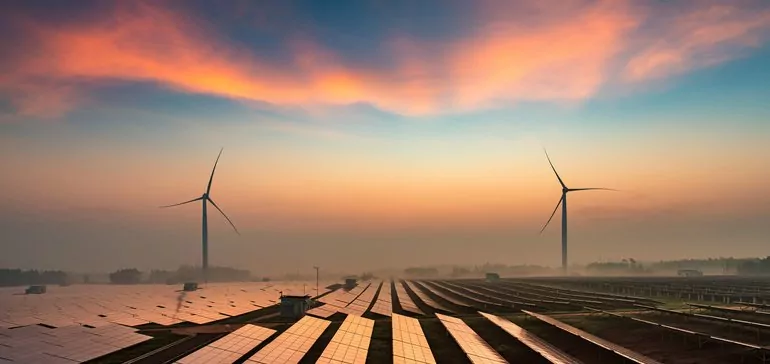How Renewable Energy Providers Can Prepare for PG&E’s Bankruptcy

Despite its negative connotation, scores of America’s largest corporations including Texaco, WorldCom, Chrysler and General Motors, have successfully turned to Chapter 11 bankruptcy over the years to execute a financial and operating restructuring, ultimately emerging as stronger companies. With its recently-announced bankruptcy, Pacific Gas & Electric (PG&E) may be in a position to do the same.
Though the company invested hundreds of millions in bolstering brush clearing and tree trimming along some 18,000 miles of power lines, PG&E, California’s largest utility, faces an estimated $30 billion or more in damages tied to the 2017 and 2018 wildfires that killed scores of people and destroyed thousands of homes and other properties. With its January 14, 2019 Chapter 11 filing, PG&E becomes the sixth-largest corporate bankruptcy ever. The impacts of this proceeding will ripple throughout the economy, and renewable energy providers are no exception.
An effective bankruptcy should do several things: create a more efficient and profitable operation to deliver critical-mission services; launch a healthy value-creating enterprise; sweep away unwanted assets; and, most importantly, get rid of corrupt business practices. In PG&E’s case, an effective bankruptcy should put the company in a stronger position to service its customers in an uncertain future shaped by the vagaries of climate change, increasing development and a mutable regulatory landscape.
Be prepared
In the meantime, renewable energy providers should brace themselves. Although PG&E has said that it doesn’t expect any impact to natural gas or electric service for customers as a result of the Chapter 11 process, there may be major collateral damage to renewable energy suppliers, since each and every power purchase agreement will be examined and assumed or rejected as an executory contract.
Some energy experts don’t expect contracts to be vacated by the bankruptcy, but renewable energy providers should definitely remain wary. PG&E needs a few quick wins early in the case, and the evaluation of renewable energy contracts provides an excellent early target.
By our estimation, the utility could save over $2 billion annually by renegotiating its solar contracts from before 2012. It is clear that owners of large-scale solar and wind projects selling power to PG&E face potential exposure, including, for example, Consolidated Edison, which could see as much as 10% of its earnings at risk.
While contracts most at risk are likely the ones put in place from 2008 to 2012, it is PG&E’s duty to examine all long-term contracts to evaluate those costs within the current market price. It is highly likely that above market prices will either be rejected or renegotiated.
Renegotiate agreements
Renewable energy providers need to be prepared to renegotiate power purchase agreements at lower rates in the near term, and to try and leverage greater rate increases in the years ahead. Each agreement that has already been signed will likely be looked at on an individual basis — some may be rejected while others amended.
Projects with PG&E exposure are expected to trade and create significant opportunities for mergers and acquisitions as companies look to mitigate risk and also capitalize on risk opportunity. Our team has already been approached by people looking to acquire exposed assets.
Because the State of California has committed to 100% fossil-free power generation by 2040, renewable energy providers remain important, but the Estate of PG&E does not care about the well-being of those providers at this time. Its goal is strictly to protect itself.
The real collateral damage will happen to the lenders, vendors and employees of renewable energy suppliers forced to adjust to the lower rates in newly negotiated contracts. How these impacts will play out exactly is still uncertain, but it’s important for businesses to think through potential scenarios.
Renewable energy providers need to focus on operating efficiently and controlling costs. The impact from new supplier contracts may have a detrimental impact on the balance sheet, but that becomes a battle for another day.
Legal pursuits
NextEra Energy has already launched a legal bid to prevent PG&E from changing the terms of its power purchase agreements, filing a complaint against the utility with the U.S. Federal Energy Regulatory Commission. NextEra asked the body to ensure PG&E does not change or reject any of the terms and conditions of its wholesale PPAs during the bankruptcy process without FERC’s approval. In January, FERC ruled that it has “concurrent jurisdiction” with bankruptcy courts when it comes to PPAs, however I wouldn’t expect this ruling to ultimately be upheld.
U.S. Bankruptcy Judge Dennis Montali has been assigned to oversee the PG&E bankruptcy (he also oversaw the utility’s restructuring in 2001) and he is likely to bring a more traditional view to the case — so while the FERC question makes for interesting litigation, I wouldn’t count on NextEra’s legal bid proving successful.
The “beauty” of bankruptcy is clear for PG&E because it provides salvation at the enterprise level. It becomes more nuanced from the perspective of the renewable energy industry, which should remain prepared to have to renegotiate contracts.
The silver lining is that the renewable energy industry is resilient, vital to meeting state mandated targets, and a healthy amount of optimism remains in the market.
Reprinted from Utility Dive

